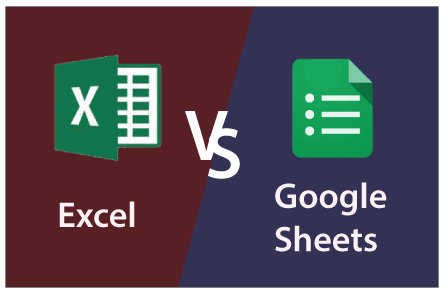5 Excel Functions to Master in Google Sheets

Whether you're new to Google Sheets or an experienced user looking to enhance your skills, understanding essential Excel functions can dramatically improve your productivity. Google Sheets, with its robust feature set akin to Microsoft Excel, is a powerful tool for data analysis, tracking, and project management. Here, we delve into five key Excel functions that you should master in Google Sheets to enhance your efficiency and effectiveness in handling data.
1. VLOOKUP


VLOOKUP, short for ‘Vertical Lookup’, is a function that allows you to search for a value in the first column of a table, then return a value from the same row of a specified column:
VLOOKUP(lookup_value, table_array, col_index_num, [range_lookup])
- lookup_value: The value to search for in the first column.
- table_array: The range of cells that contains the data. The first column must contain the lookup values.
- col_index_num: The column number in the table from which to retrieve the value.
- range_lookup: An optional argument. If TRUE or omitted, an approximate match is returned. If FALSE, an exact match is required.
📘 Note: To find an exact match, always set the last parameter to FALSE to avoid unexpected results.
2. INDEX-MATCH


VLOOKUP has its limitations, especially when you need to look left in a table or when the lookup column isn’t the first column. INDEX-MATCH is a more flexible solution:
INDEX(reference, MATCH(lookup_value, lookup_array, [match_type]))
- INDEX returns the value of a cell in a table based on the row and column numbers.
- MATCH searches for the lookup_value within the lookup_array and returns the relative position of that item.
Using INDEX-MATCH allows for more complex lookups where the lookup column can be anywhere in your table.
🔍 Note: Always nest the MATCH function inside the INDEX function, ensuring dynamic lookups.
3. SUMIFS


SUMIFS lets you sum values in a range based on multiple criteria:
SUMIFS(sum_range, criteria_range1, criteria1, [criteria_range2, criteria2], …)
- sum_range: The cells to add.
- criteria_range: The range of cells to be evaluated by the corresponding criteria.
- criteria: The condition that the cells in each criteria_range must fulfill to be included in the sum.
This function is incredibly useful for conditional sum operations, allowing for dynamic and multi-faceted data analysis.
🧮 Note: Multiple criteria must all be true for the sum to be included, creating precise, conditional sums.
4. ARRAYFORMULA


ARRAYFORMULA extends a single formula to an entire range of cells:
ARRAYFORMULA(array_formula)
Here’s why ARRAYFORMULA is essential:
- Automates operations that would otherwise require manual copying of formulas.
- Enables complex calculations across rows or columns without formula duplication.
🧑💻 Note: For optimal use, understand how ARRAYFORMULA interacts with other functions to avoid unexpected results.
5. QUERY


QUERY allows you to treat Google Sheets data like a database, enabling complex data manipulation:
QUERY(data, query, [headers])
- data: The range of cells to query.
- query: A SQL-like string to define the query.
- headers: An optional number specifying how many rows to use as the column headings.
QUERY provides immense flexibility in handling data, allowing for filtering, sorting, and aggregation within your Sheets:
🛠 Note: Although powerful, QUERY has its own syntax and limitations; familiarize yourself with its SQL-like language for best results.
In summary, mastering these functions in Google Sheets is crucial for anyone looking to leverage this tool effectively. Each of these functions provides unique capabilities that can simplify complex tasks, streamline workflows, and enhance data analysis. By integrating VLOOKUP, INDEX-MATCH, SUMIFS, ARRAYFORMULA, and QUERY into your toolkit, you’ll be well-equipped to handle a variety of data manipulation scenarios with ease and accuracy.
What is the difference between VLOOKUP and INDEX-MATCH?

+
VLOOKUP searches for a value in the first column of a table and returns a value in the same row from another column. INDEX-MATCH, however, can look up values in any column and return results from any other column, making it more flexible for complex data sets.
Can I use VLOOKUP or INDEX-MATCH with approximate matching?

+
Yes, both VLOOKUP and MATCH can perform approximate matches. For VLOOKUP, set the [range_lookup] to TRUE. For MATCH, you can specify a match_type of 1 for less than, -1 for greater than, or 0 for exact match.
How do I ensure accurate results when using the SUMIFS function?

+
Accuracy with SUMIFS depends on correctly defining the criteria ranges and criteria. Ensure that your criteria ranges cover the same rows as your sum_range, and that your criteria are precisely defined to avoid unintended matches.
What are some limitations of the QUERY function in Google Sheets?

+
QUERY is powerful but has limitations in terms of SQL syntax support. It doesn’t support subqueries, can’t handle complex JOIN operations, and has restrictions on some SQL functions like LIKE or CONTAINS.
Can ARRAYFORMULA be used with other functions in Google Sheets?

+
Absolutely, ARRAYFORMULA can be combined with other functions like SUM, AVERAGE, or even VLOOKUP to perform calculations across multiple cells at once, making it highly versatile for data analysis.